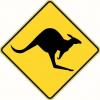I see a lot of folks recommending a low angle block of some type for a person's first plane. Isn't this primarily an end grain tool?
I never reach for a low angle block plane for long grain. And my end grain trimming isn't 10% of my block plane use. In my experience a LA block just isn't the right tool for long grain.
For someone's first block plane, I'd assume they will be removing saw marks and trimming other edges. Perhaps doing some end grain planing. But a standard angle plane can trim end grain too.
One might argue that someone could simply steepen the bevel on the cutter so the plane will handle long grain better. But realistically is this something someone will be able to do easily with their first plane? Not to mention the time it takes and the good steel wasted. One could also argue that you could just buy two blades. This is true. But again, is a blade switch every time the task changes going to be something a beginner can do easily and in a decent amount of time?
I have a low angle block plane with a total angle of 40*. This plane handles both long grain and end grain, but is not stellar at either.
Just food for thought. My first block plane was a 9 1/2 type and it took about 5 attempts to sharpen it correctly. But when I did, I was impressed at how it could cut long and end grain.




 Reply With Quote
Reply With Quote






